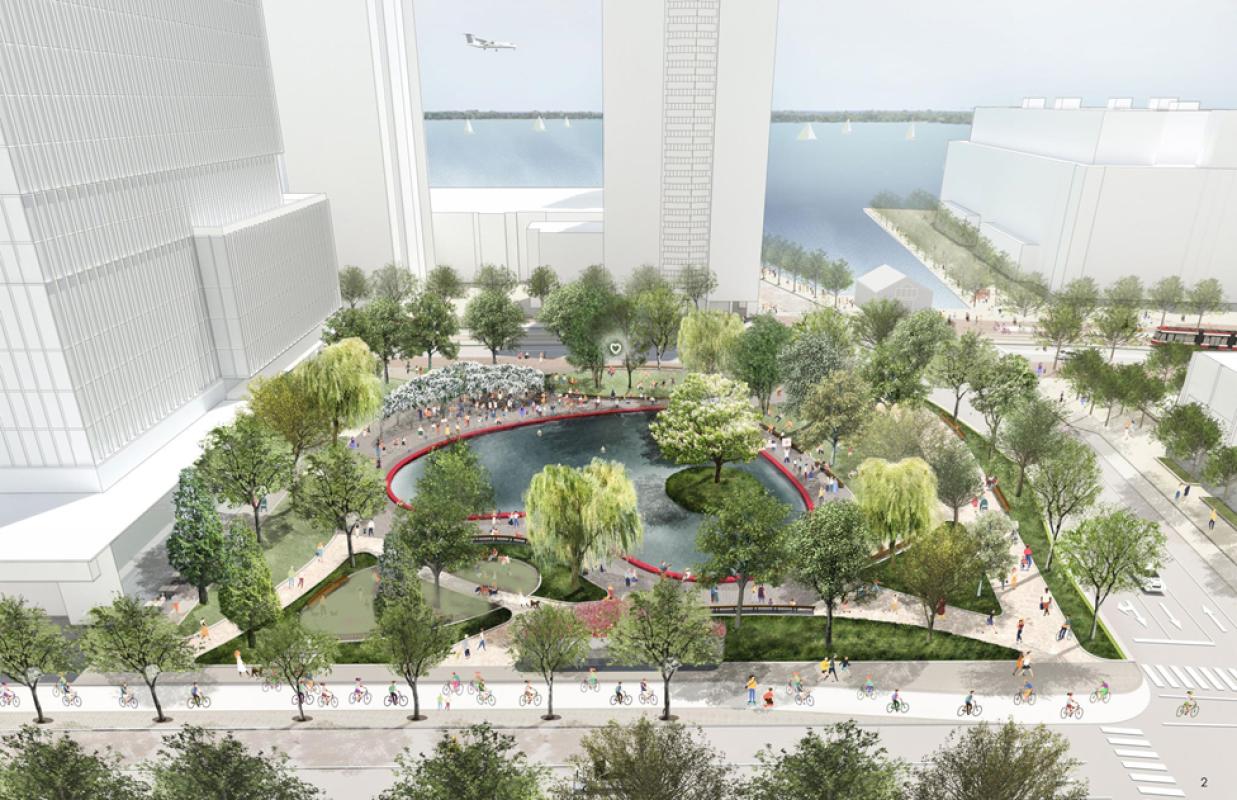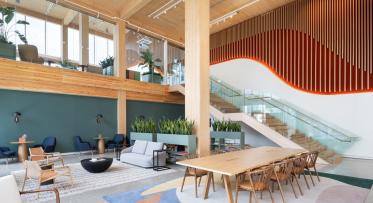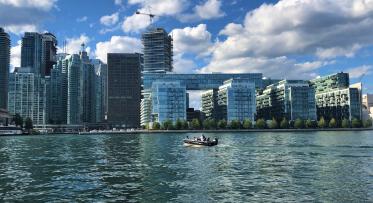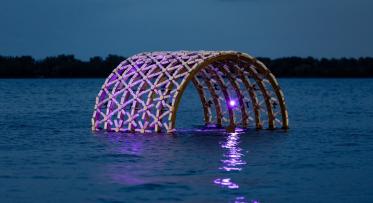Love Park: A Love Letter to Resilience
Rendering of Love Park courtesy of Claude Cormier et Associés.
POSTED: OCTOBER 15, 2021 I PARKS AND PUBLIC SPACES, SUSTAINABILITY, DESIGN
BY: COREY BIALEK
Waterfront Toronto is committed to delivering beautiful, sustainable, and resilient green spaces across its new and existing communities.
Against a backdrop of environmental uncertainty, it is imperative to deliver green spaces that are environmentally and socially resilient. This is particularly true in dense urban areas, where downtown green spaces provide a patchwork of public “backyards” where we play, gather, contemplate, and connect – to each other and to nature.
At Waterfront Toronto, we define urban resilience as the capacity of individuals, communities, institutions, businesses, and systems within a city to survive, adapt, and grow no matter what kinds of chronic stresses and acute shocks they experience. This definition is advanced in our Waterfront Toronto Resilience and Innovation Framework (WTRIF) and corresponding Action Plan. Together, these documents showcase our commitment to sustainability and guide delivery of all our projects, from parks and open spaces to streets and buildings.
In this blog, we outline a series of WTRIF-informed resilient design solutions and the benefits they are expected to deliver embedded within one of our newest parks, Love Park, which was designed by Claude Cormier Associés, in collaboration with gh3* and Arup.
Future climate studies show that Toronto can expect to experience wetter, hotter, and wilder weather over the next half century due to climate change.
As the effects of climate change worsen, the severity of rainfall events is predicted to increase. The city is expected to receive 817mm per year from 2021 to 2050 up from 786mm from 1976 to 2005. As we experience increasingly severe rainfall events, it is important for new projects to manage the quality and quantity of stormwater on-site. Acting as a veritable sponge, Love Park will retain runoff and minimize contaminated rainfall discharge into the urban stormwater system.
Love Park’s water story is further enhanced by its diverse landscape plan. The plant species featured in the park will create a resilient, self-sufficient, and durable landscape that requires less water for irrigation and maintenance. It will also introduce 37 new trees, whose long-term viability will be enhanced through connectivity of the root zone, established through the provision of 30 cubic metres of soil per tree. In addition to providing sufficient oxygen to the roots, this soil-to-tree ratio generally yields trees with diameters of 40 centimetres (16 inches) and canopies stretching out to nearly 10 metres (32 feet). The health and longevity of the trees will be further enhanced through the installation of underground bubblers, which will bring water and oxygen to the root system.
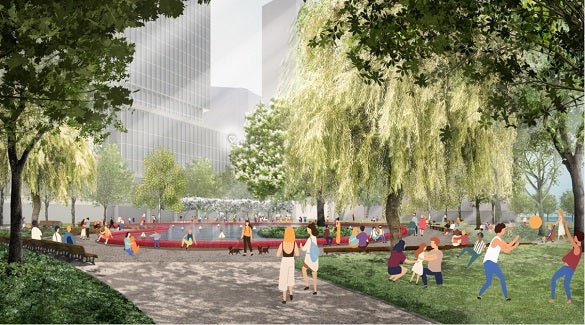
The future tree canopy provides shading across the park, important to reducing the impacts of the urban heat island effect. Rendering courtesy of Claude Cormier et Associés.
Love Park’s vegetation will also reduce the impact of the urban heat island effect.
According to the Climate Atlas of Canada, Toronto is expected to experience an increased number of extremely hot days, defined as +30C, from 2021 to 2050. In fact, the number of extremely hot days is predicted to nearly triple from 11.9 between 1976 and 2005 to 30.1 between 2021 and 2050.
The impact of extremely hot days is amplified in downtown areas, caused by a phenomenon referred to as the urban heat island effect. The heat island effect occurs in most large urban areas, where built surfaces, such as buildings and roads, absorb a significant proportion of the solar radiation, which is then released as heat, raising the air temperature by several degrees.
Love Park has been designed to reduce the urban heat island effect via two key strategies. First, the granite pavers being used to create pathways in the park will reflect more heat than they absorb. Secondly, the introduction of dense vegetation will provide shade, deflect solar radiation, and release moisture into the atmosphere – all important measures to prevent overheating of the park, the adjacent area, and visitors to the park.
The design of Love Park also addresses social resilience by enhancing society’s ability to respond and adapt to the changing climate.
One of the ways human resiliency can be enhanced is through biophilic design. Biophilic design incorporates natural landscape features and other elements to connect humans more closely to nature. Establishing these connections can have positive effects on psychological health, including adaptability, alertness, and concentration. They also improve physical health by reducing stress, blood pressure, and heart rate.
Love Park embraces biophilic design through a mosaic of vines, shrubs, and trees, which will delight the senses, offering park users a natural refuge in an otherwise hardscaped setting. The public art installations at Love Park will incorporate a sculptural menagerie that showcases some of Canada’s most iconic animals. In addition to offering whimsical opportunities for play, the sculptures will deepen the human connection to nature. This experience will be amplified by the adjacent heart-shaped pond, a feature that will allow visitors to touch, hear, and see water.
Finally, Love Park provides accessible green space, a key component to creating socially resilient communities on the waterfront. With COVID-19, we have seen first-hand the importance of green space in supporting community resilience. For instance, Toronto’s park usage in 2020 was double that of 2019 Located in Toronto’s bustling downtown, Love Park will provide opportunities for residents, workers, and visitors to experience an immersive green experience that enhances environmental and social resilience.
Love Park is our love letter to resilience. We can’t wait for you to experience it and see firsthand how environmental and social resilience has been embedded throughout.
For more information about Love Park visit the project page.

